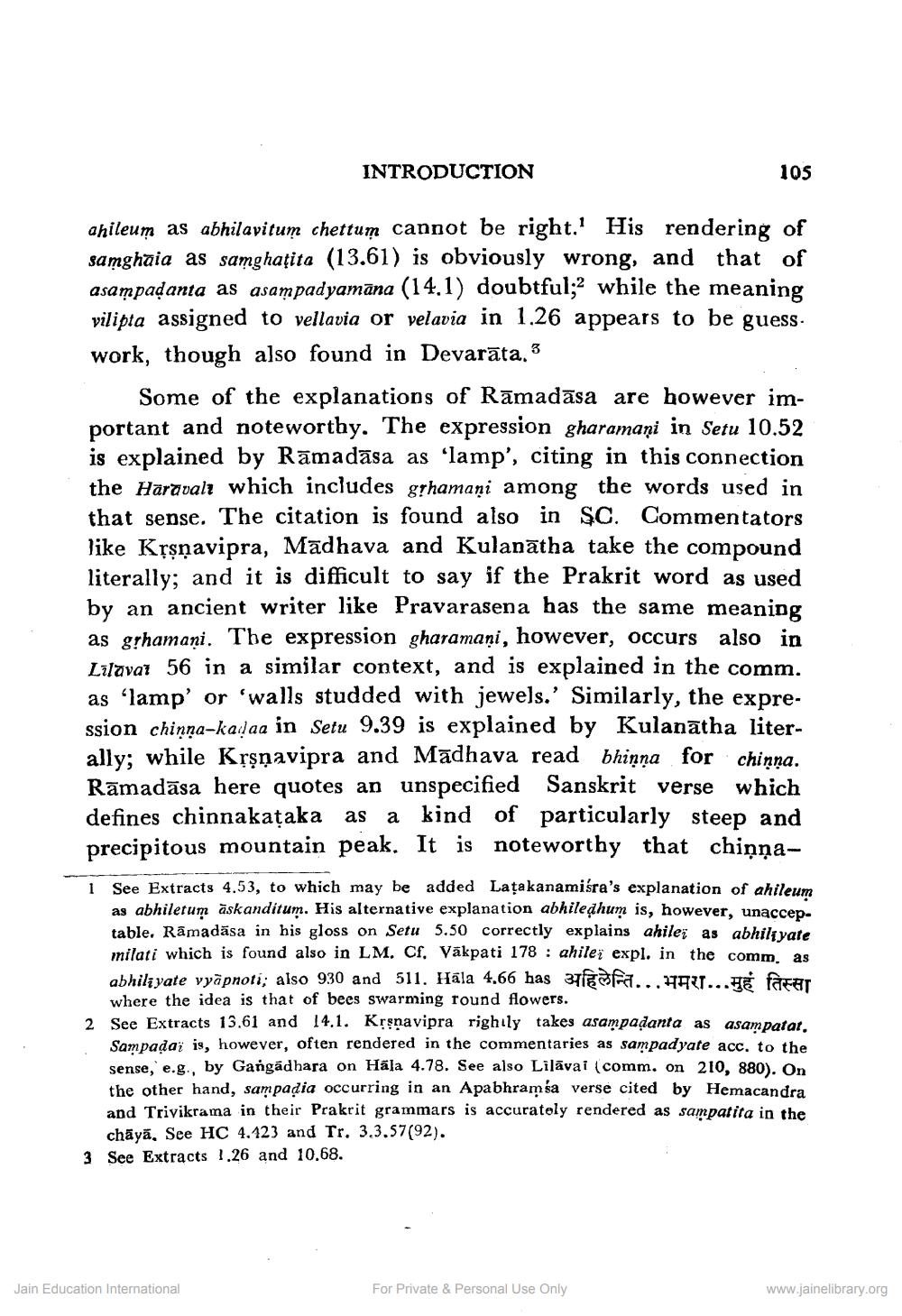________________
INTRODUCTION
105
ahileum as abhilavitum chettum cannot be right.' His rendering of samghaia as samghațita (13.61) is obviously wrong, and that of asampaďanta as asampadyamāna (14.1) doubtful;2 while the meaning vilipta assigned to vellavia or velavia in 1.26 appears to be guess. work, though also found in Devarāta. 3
Some of the explanations of Rāmadāsa are however important and noteworthy. The expression gharamaņi in Setu 10.52 is explained by Rāmadāsa as 'lamp', citing in this connection the Haravalt which includes grhamani among the words used in that sense. The citation is found also in $C. Commentators like Krşņavipra, Madhava and Kulanātha take the compound literally; and it is difficult to say if the Prakrit word as used by an ancient writer like Pravarasena has the same meaning as gļhamani. The expression gharamani, however, occurs also in Lilavat 56 in a similar context, and is explained in the comm. as 'lamp' or 'walls studded with jewels.' Similarly, the expression chinna-kataa in Setu 9.39 is explained by Kulanātha literally; while Krşņavipra and Madhava read bhinna for chinna. Rāmadāsa here quotes an unspecified Sanskrit verse which defines chinnakataka as a kind of particularly steep and precipitous mountain peak. It is noteworthy that chiņņa
1 See Extracts 4.53, to which may be added Laţakanamisra's explanation of ahileum
as abhiletum āskanditum. His alternative explanation abhiledhum is, however, unacceptable. Rāmadāsa in his gloss on Setu 5.50 correctly explains ahile; as abhiltyate milati which is found also in LM. Cf. Väkpati 178 : ahileï expl. in the comm. as abhiliyate vyāpnoti; also 930 and 511. Hala 4,66 has 3 ... 491... FAT where the idea is that of bees swarming round flowers. See Extracts 13.61 and 14.1. Krenavipra rightly takes asampadanta as asampatar, Sampadaz is, however, often rendered in the commentaries as sampadyate acc. to the sense,' e.g., by Gangadhara on Hāla 4.78. See also Lilāvai (comm. on 210, 880). On the other hand, sampadia occurring in an Apabhramsa verse cited by Hemacandra and Trivikrama in their Prakrit grammars is accurately rendered as sampatita in the
chāyā, See HC 4.123 and Tr. 3.3.57(92). 3 See Extracts 1.26 and 10.68.
Jain Education International
For Private & Personal Use Only
www.jainelibrary.org




